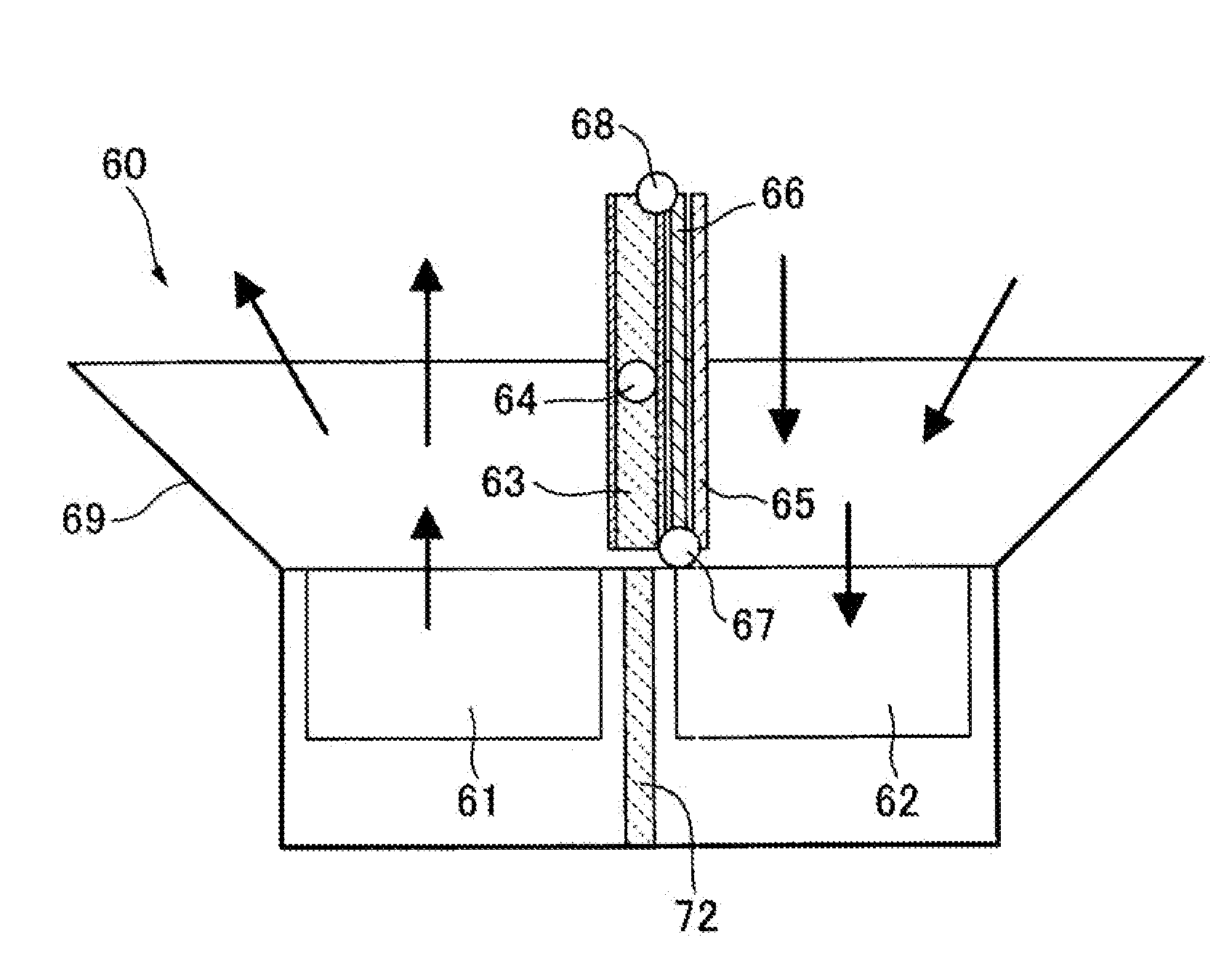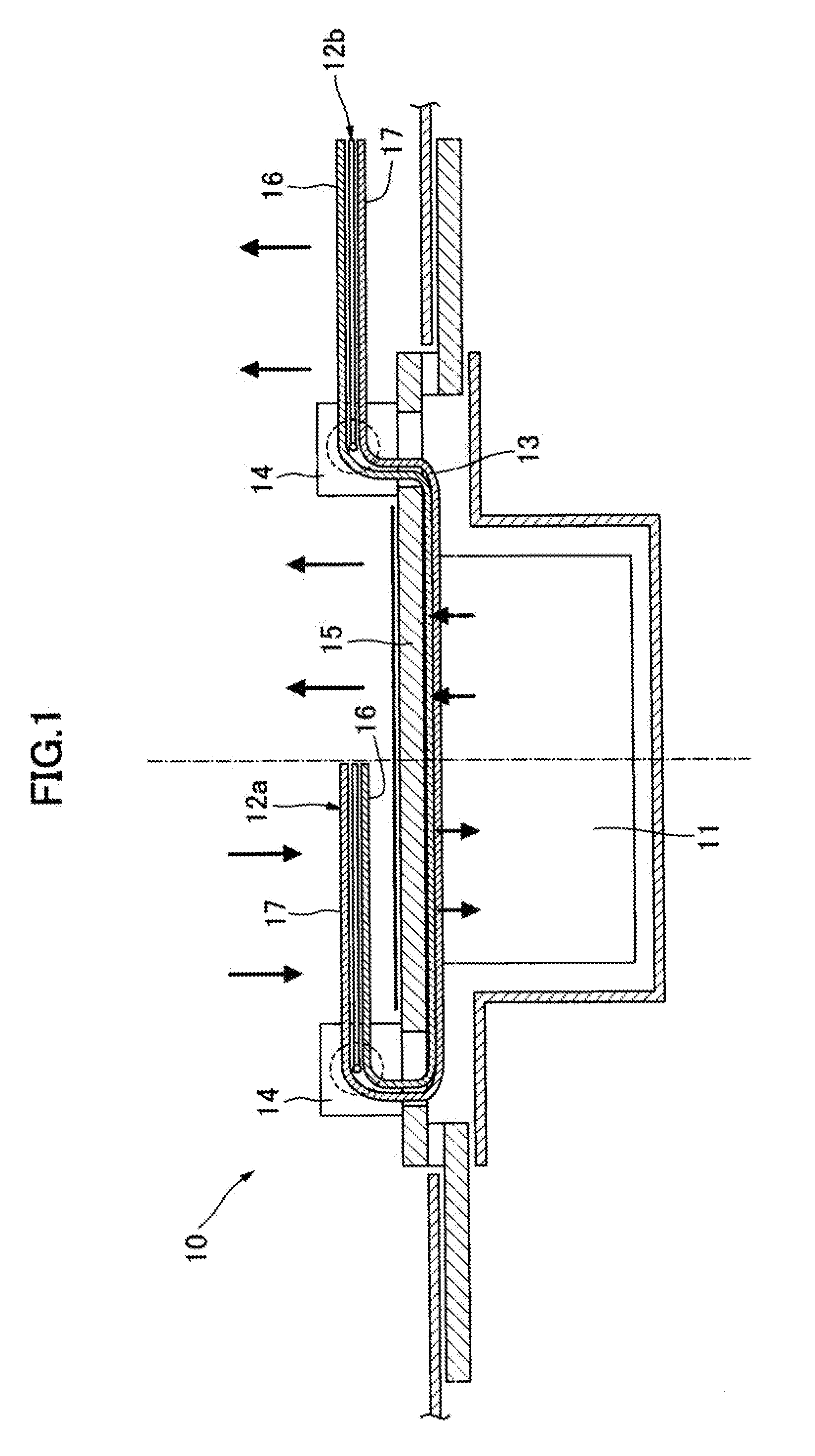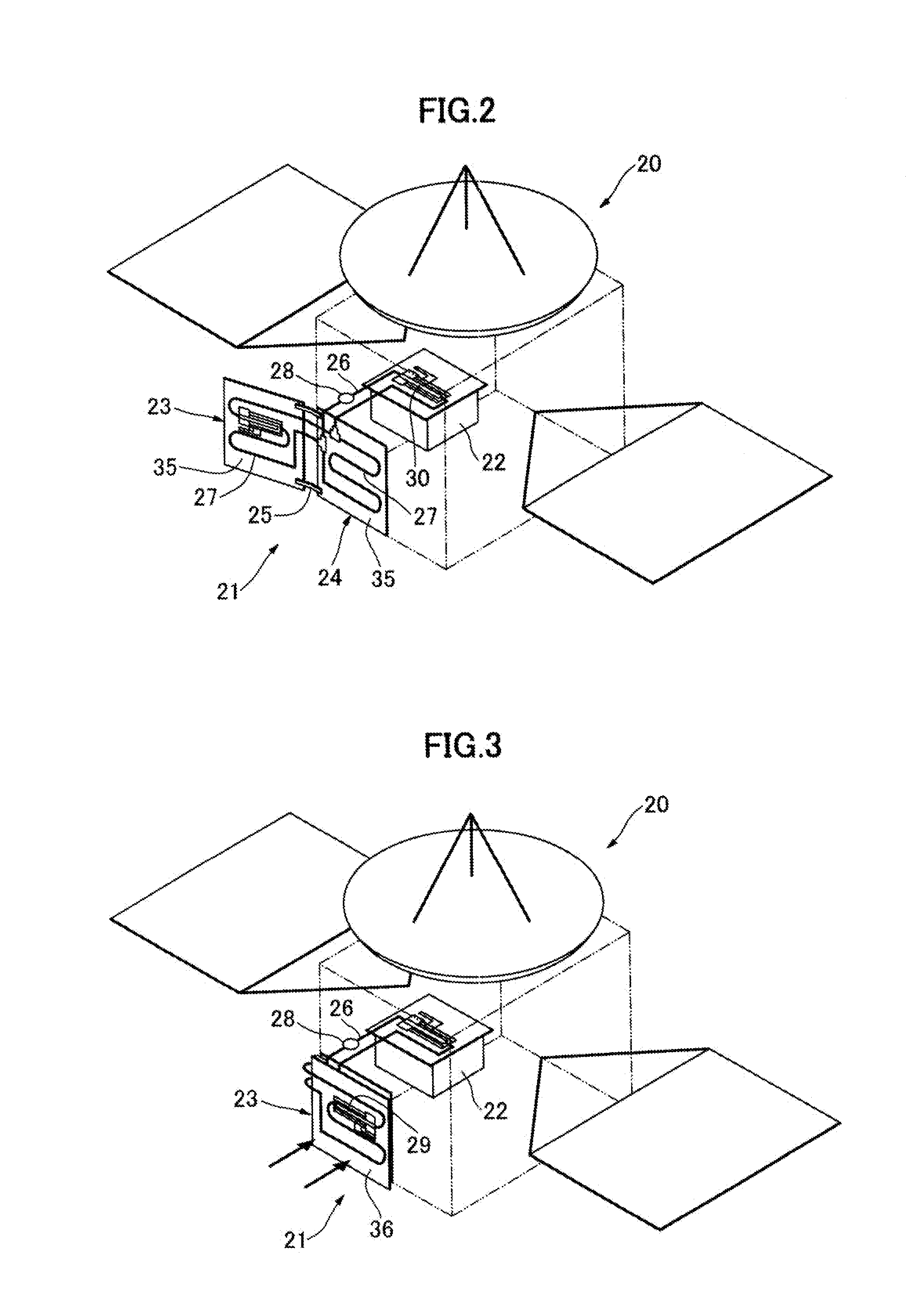Thermal control apparatus
a control apparatus and control technology, applied in the direction of indirect heat exchangers, light and heating apparatus, cosmonautic vehicles, etc., can solve the problems of inability to realize thermal design, structural complexity, heavy weight, etc., and achieve the effect of facilitating weight reduction and structural/mechanistic simplification
- Summary
- Abstract
- Description
- Claims
- Application Information
AI Technical Summary
Benefits of technology
Problems solved by technology
Method used
Image
Examples
first embodiment
[0035]FIG. 1 is a sectional view showing a thermal control apparatus 10 according to a first embodiment of the present invention, wherein a left half thereof shows a state after a paddle of the thermal control apparatus is closed (i.e., retracted), and a right half thereof shows a state after the paddle is opened (i.e., deployed). The thermal control apparatus 10 according to the first embodiment is intended to be installed in a spacecraft, particularly in a small satellite. In FIG. 1, the reference numeral 1 indicates one of various on-board devices of a spacecraft, which are to be subjected to thermal control (hereinafter referred to as “target object”). The thermal control apparatus 10 comprises a base plate 15. In the first embodiment, the base plate 15 is formed as a part of a satellite structure.
[0036]As shown in FIG. 1, the thermal control apparatus 10 according to the first embodiment includes a pair of right and left deployable / retractable heat-exchange paddles 12b, 12a (he...
second embodiment
[0045]As a second embodiment of the present invention, a thermal control apparatus 21 for a medium or large spacecraft, which employs a fluid loop, will be described with reference to FIGS. 2 and 3. FIGS. 2 and 3 show a medium or large spacecraft 20 equipped with the thermal control apparatus 21 according to the second embodiment, wherein a heat-exchange paddle 23 of the thermal control apparatus 21 illustrated in FIG. 2 is set in its opened (i.e., deployed) position, and the heat-exchange paddle 23 illustrated in FIG. 3 is set in its closed (i.e., retracted) position.
[0046]The thermal control apparatus 21 comprises a heat-receiving member 22 which encloses or covers an on-board device generating heat, the heat-exchange paddle 23, a base plate 24, a deploying / retracting mechanism 25 and a fluid loop 26. The heat-exchange paddle 23 and the base plate 24 have a pipe 27 attached onto respective surfaces thereof to extend all over the surfaces while allowing fluid to flow therethrough. ...
third embodiment
[0050]As a third embodiment of the present invention, a thermal control apparatus 41 for a medium or large spacecraft, which employs a combination of a fluid loop and a high-temperature-heat transport element, will be described with reference to FIGS. 4 and 5. FIGS. 4 and 5 show a medium or large spacecraft 40 equipped with the thermal control apparatus 41 according to the third embodiment, wherein a heat-exchange paddle 43 of the thermal control apparatus 41 illustrated in FIG. 4 is set in its opened (i.e., deployed) position, and the heat-exchange paddle 43 illustrated in FIG. 5 is set in its closed (i.e., retracted) position.
[0051]The thermal control apparatus 41 comprises a heat-receiving member 42 which encloses or covers an on-board device generating heat, the heat-exchange paddle 43, a base plate 44, a deploying / retracting mechanism 45 and a fluid loop 46. The base plate 44 has a pipe 47 attached onto a surface thereof to extend all over the surface while allowing fluid to fl...
PUM
 Login to View More
Login to View More Abstract
Description
Claims
Application Information
 Login to View More
Login to View More - R&D
- Intellectual Property
- Life Sciences
- Materials
- Tech Scout
- Unparalleled Data Quality
- Higher Quality Content
- 60% Fewer Hallucinations
Browse by: Latest US Patents, China's latest patents, Technical Efficacy Thesaurus, Application Domain, Technology Topic, Popular Technical Reports.
© 2025 PatSnap. All rights reserved.Legal|Privacy policy|Modern Slavery Act Transparency Statement|Sitemap|About US| Contact US: help@patsnap.com



